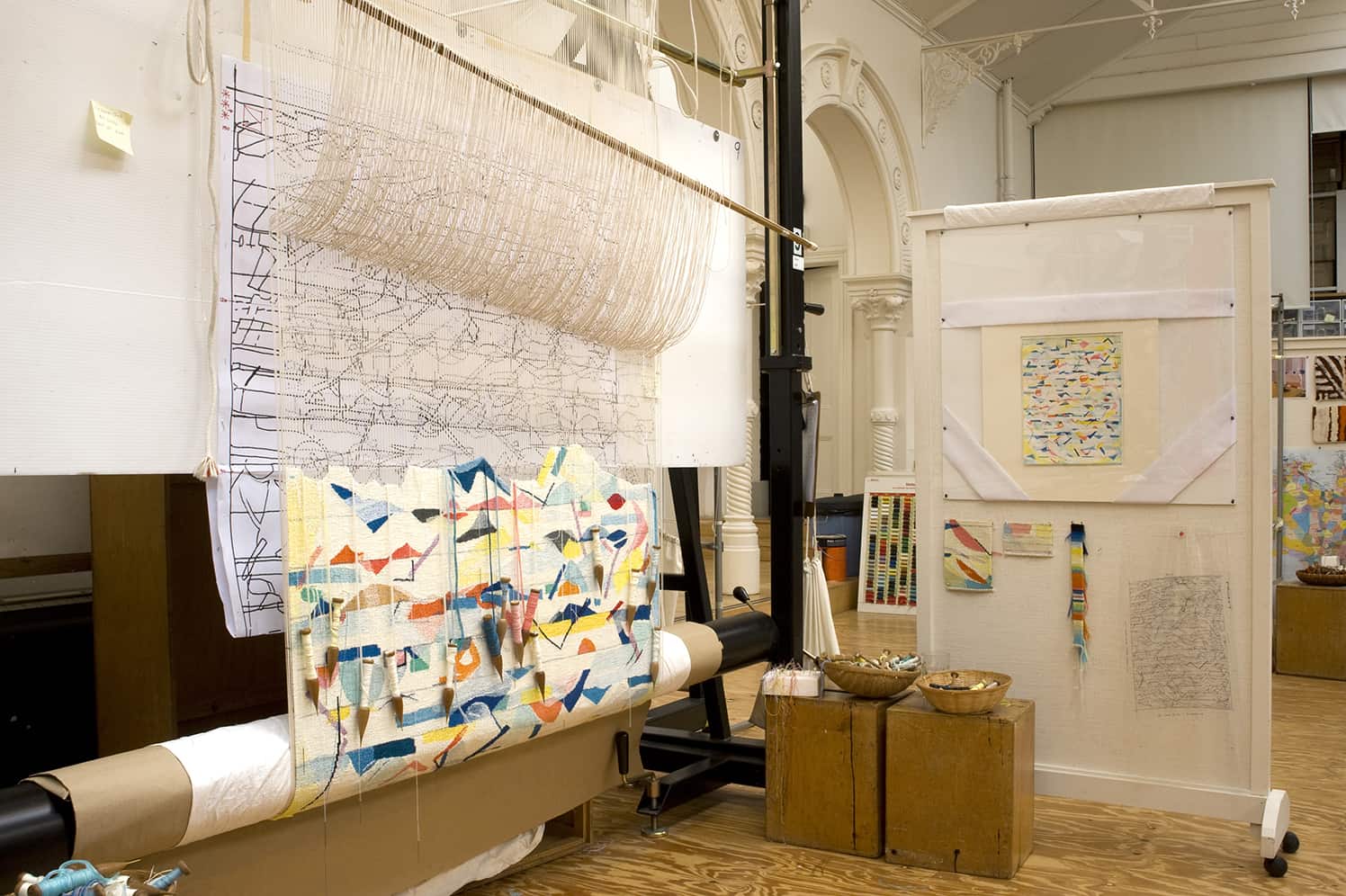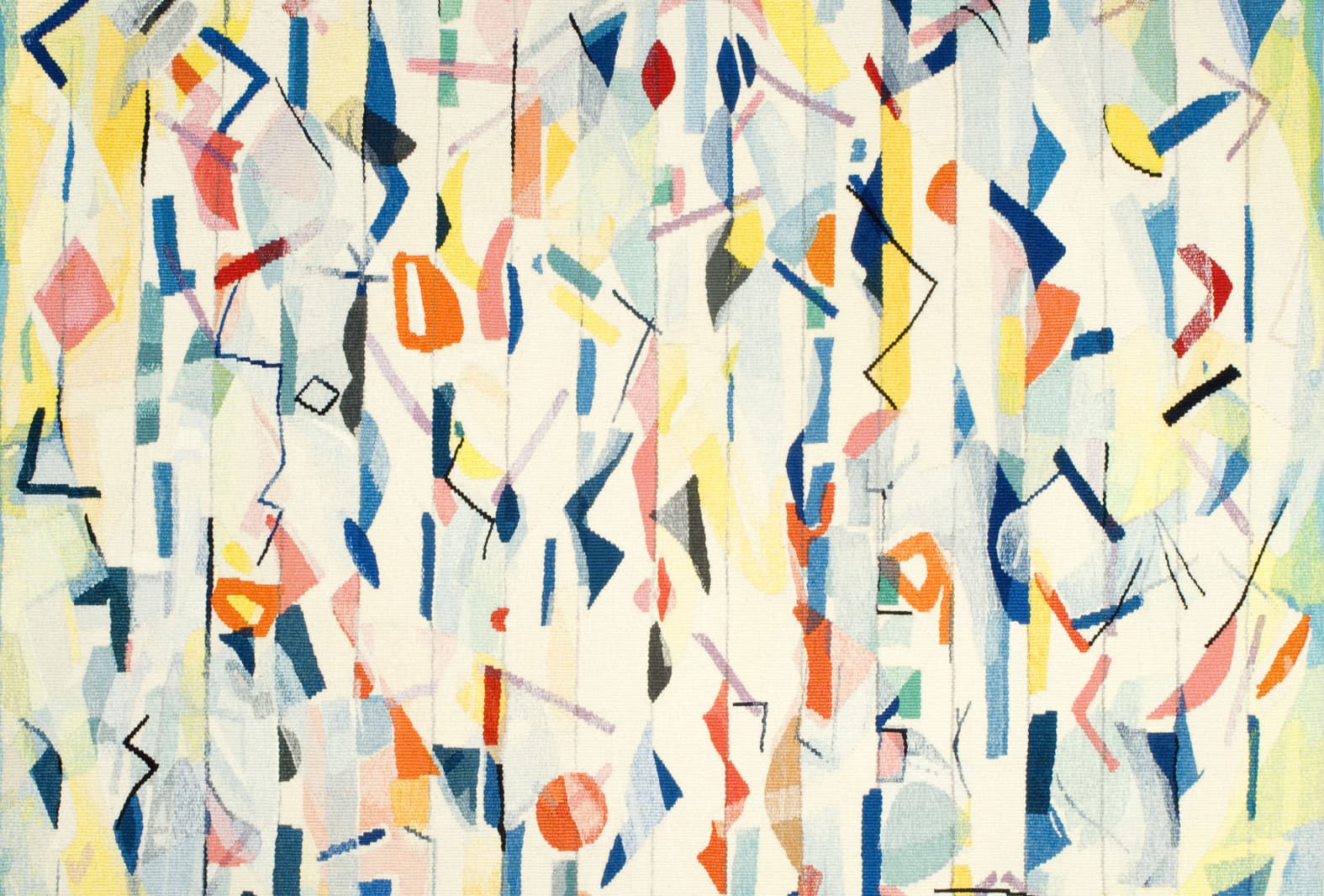


The Lyceum Club in Melbourne commissioned Allegro designed by Yvonne Audette in 2011.
The Lyceum Club was established in 1912 and was modelled on the London Lyceum Club. Membership is restricted to women graduates and other women who have distinguished themselves in art, music, literature, philanthropy or public service. The Lyceum Club has a profound fine art collection, made up of works purchased throughout the Club’s 100-year history.
Audette was born in Sydney in 1930 and, although being a painter all her life, has only been recognized more recently as a leading Australian abstract expressionist. Of her style, Audette notes, “it’s like music. It started to all vibrate and become a symphony.”
The tapestry is based on a design that Audette painted 14 years prior to collaborating with the ATW. The original work was created with gouache, watercolour and ink on paper, and was inspired by a screen, painted by Vaseralli, that Audette saw on her travels during the 1950s.
The design has regular vertical lines that run from top to bottom, so the decision was made to weave the tapestry on its side. This means that each vertical line runs across the tapestry, and does not become a slit—where two edges of two colours meet, that would then need to be sewn up. During consultation with the weavers, Audette expressed that the rhythm of the lines were the most important aspect that needed to be captured in the tapestry. The weavers sought to retain a sense of musical fluidity in the finished tapestry.
This tapestry contains a large amount of cottons. Cotton is generally used for capturing pale shades and tones. The very subtle bobbin mixes that the weavers created allows for gentle washes of colour throughout the tapestry. The palette for this tapestry covers the entire spectrum of colour, incorporating shades and tones from white to black.